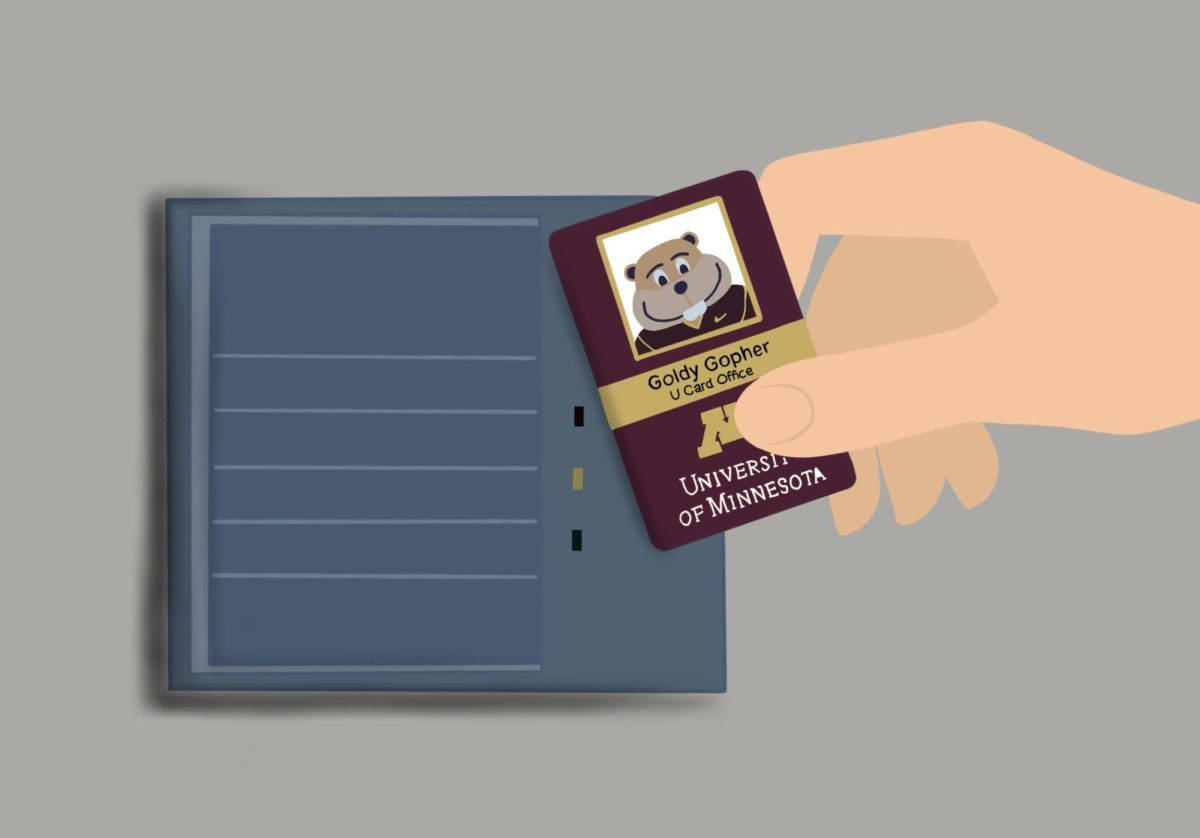Senior Vice President Myron Frans announced at the July 12 Board of Regents meeting the University of Minnesota’s plan to revisit and update building access, among other aspects of the University’s public safety policy.
Back in April, Facilities Management staff discovered someone unaffiliated with the University had gained entry to Appleby Hall before passing away overnight.
Other recent events have prompted additional scrutiny of building access. A mass shooting at Michigan State University saw two students killed in their classroom by a gunman who was unaffiliated with the institution, who then proceeded to fatally shoot another student outside before being killed by police.
Frans explicitly invoked Michigan State as a factor in the decision to revisit the University’s building policies — in other words, to make access more restrictive.
Additionally, Frans indicated Pioneer Hall will be testing the use of turnstiles to control access to dorm space this fall, in response to a plethora of reports of indecent or dangerous conduct. Many of these reports were accurate, though fears around some — including a wellness check in Middlebrook Hall and a suspected incident of indecent conduct in Bailey Hall — turned out to have been exaggerated and propagated by misunderstanding.
If the results of the turnstile test deem positive by whatever metrics Frans intends to use, we can expect to see another hike in room and board fees to pay for permanent installations in every residence hall on campus.
“I think ultimately turnstiles will be more trouble than help,” said Oliver Lee, a rising second-year student who lived in Middlebrook Hall last year. “I feel like turnstiles will just frustrate students, leading them to find more ways around them.”
Meanwhile, while restricting keycard access to classroom buildings would be fairly straightforward, we should be willing to wonder what extent we should go to buy the appearance of a little more safety on campus, particularly if nothing is being done to prevent these hazards from being moved off campus and into the city at large.
To be personal for a moment: as a teaching assistant, the idea of having to deal with an active shooter situation terrifies me. There are few nightmares that are worse for any educator than being helpless in the face of a lethal threat to the students we’re responsible for.
We must rationally assess where the risks lie. Mass shootings at universities are newsworthy specifically because they are rare. Moreover, when they do occur, they are almost always committed by someone with a direct connection to the institution.
The Virginia Tech shooting, which remains the deadliest school shooting in American history, was committed by a student. Restricting building access to students, faculty and staff would not have been sufficient to prevent the tragedy.
There is also no particular reason to believe locking classrooms and dorms to external threats will prevent acts of violence overall. Individuals who intend to commit mass murder are not necessarily going to be discouraged by limited access to one potential target if there are other publicly accessible areas available to them, either on or off campus.
As the Appleby Hall tragedy demonstrated, not every outsider who seeks access to a campus building is necessarily intending to do harm. The decision on the part of the parent group Campus Safety Coalition to instantly weaponize this event in favor of access restrictions rather than to take a moment to consider broader community issues such as homelessness, poverty, healthcare access and addiction speaks volumes about their priorities.
In other words, many have adopted the mindset the University is a fortress that must be defended rather than a public institution that should be welcoming and making an active effort to improve its community.
This sense of openness is something that we should value — both in a grand, idealistic sense and from a more down-to-earth logistical perspective. Turnstiles in dormitories will make for a sizable hassle during high-traffic periods like check-in and check-out unless other entrances are left open, defeating the purpose.
The Midwestern tendency to be courteous and hold doors open will also need to be quashed for any security benefit to be gained. What seems likely is that people will continue to hold doors for others, especially those who look like they belong in a particular building at a particular time. In other words, they will be making spot judgments about who doesn’t seem to belong, something that will almost inevitably result in profiling — as indeed it already has.
Overall, the University’s planning around public safety has focused more on optics than on substance. It is telling that during the July update to the regents, Frans chose to open by describing marketing and outreach efforts rather than more concrete investments.
That said, restricting card access and installing turnstiles are still superficial fixes to deeper problems and fail to answer the fundamental question: What does safety mean at a public university nestled in the heart of a major city?
An approach from University administrators that centers data and cites its sources, instead of our current security theater, would certainly be part of that answer. Meanwhile, to the University’s credit, seeking to rebuild community relationships in order to mitigate crime in the area has also been on the agenda but this seems to be receiving significantly less attention, publicity and funding than physical measures.
But neither of these factors on their own can substitute for the mutual trust that plays an integral role in keeping our campus community safe and well.
“I felt safe in the dorms this year, personally, due to the number of students that live in Middlebrook,” Lee said. “I knew we would all have each other’s backs if necessary.”






















